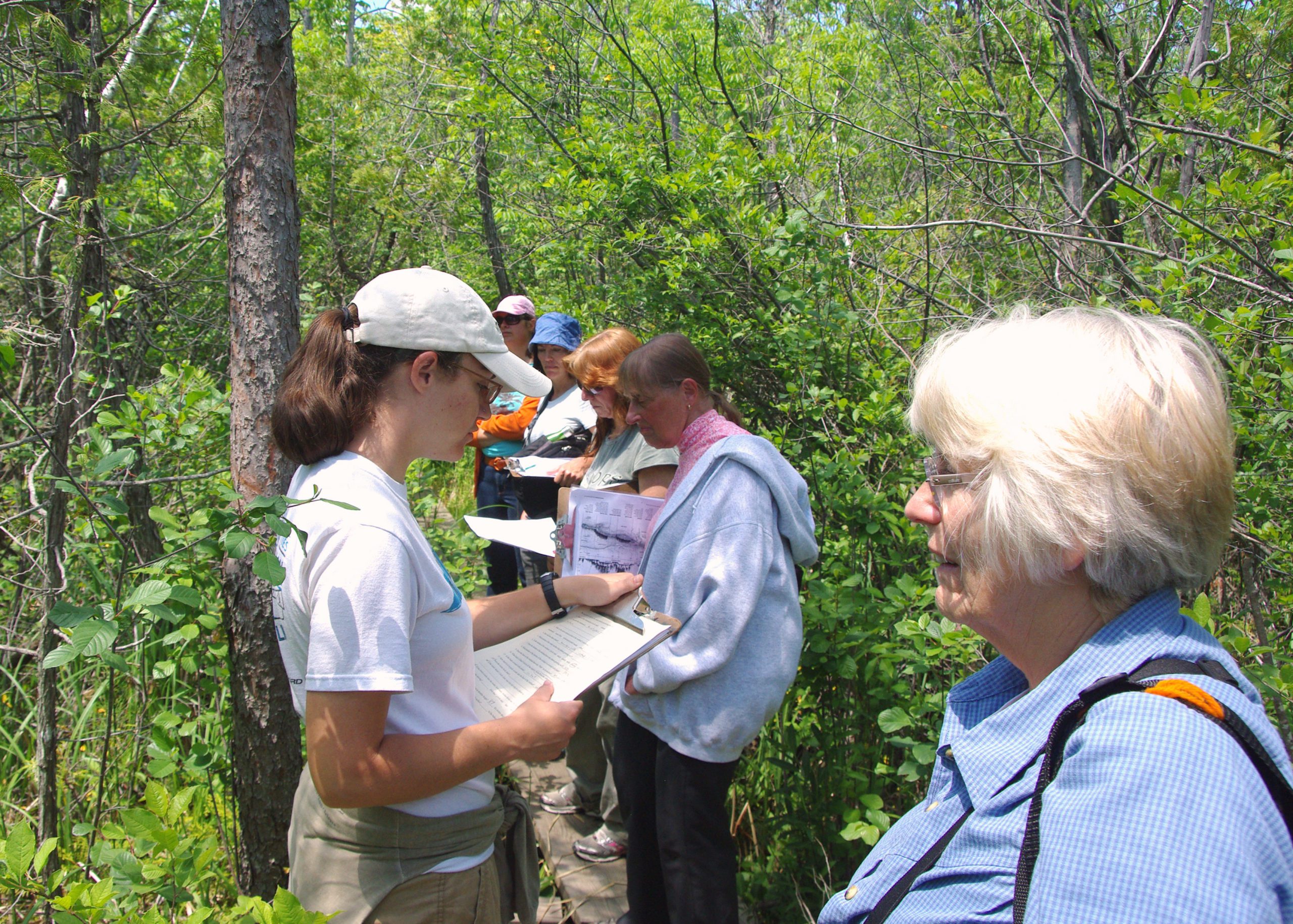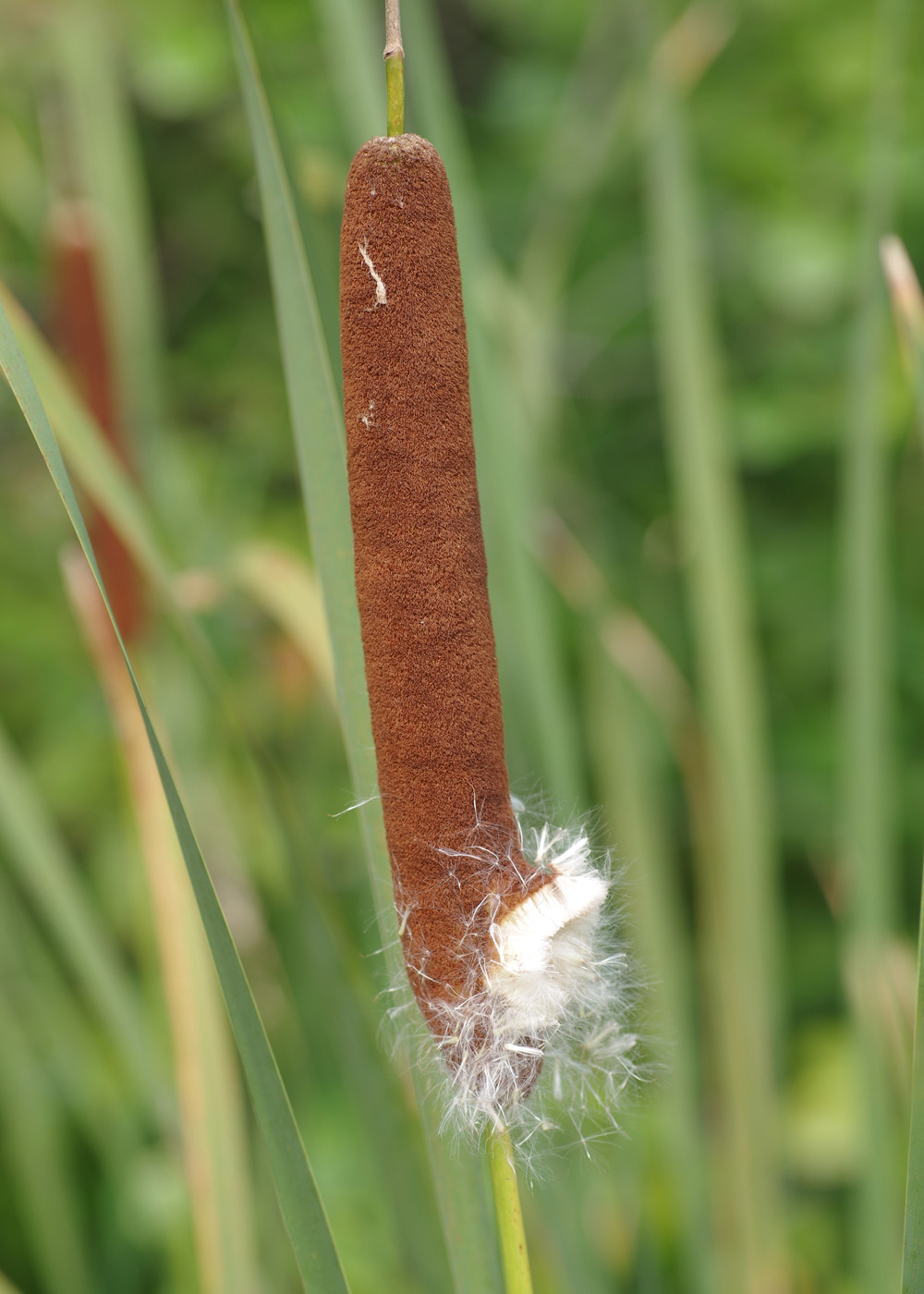
by Kate Redmond
And Now for Something Different Cattails
Howdy, BugFans,
This episode was adapted from an article that the BugLady wrote in 2007 for the BogHaunter, the newsletter of the Friends of the Cedarburg Bog.
Wanted: Colonists to settle in wide open spaces. Must be adaptable, able to put down roots in submerged or soggy soil, and stand firm in the face of wind and waves, rodents and carp. Temporary accommodations only.
It turns out that cattails are ideal candidates for this not-so-attractive job description. Their tall, strap-like leaves and conspicuous “wiener-on-a-stick” female flower and seed stalks emerge from standing water and from damp pond and stream edges. The leaves’ slender shape is typical of “sun-catchers” in open spaces. They are designed to bend without breaking via a series of internal veins or “struts” that divide the leaf’s interior into flexible cells.
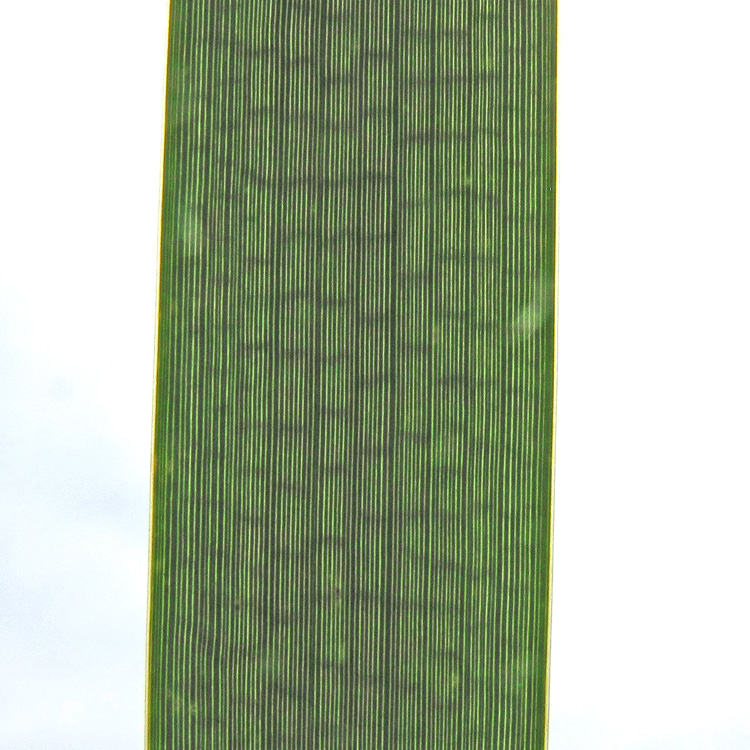
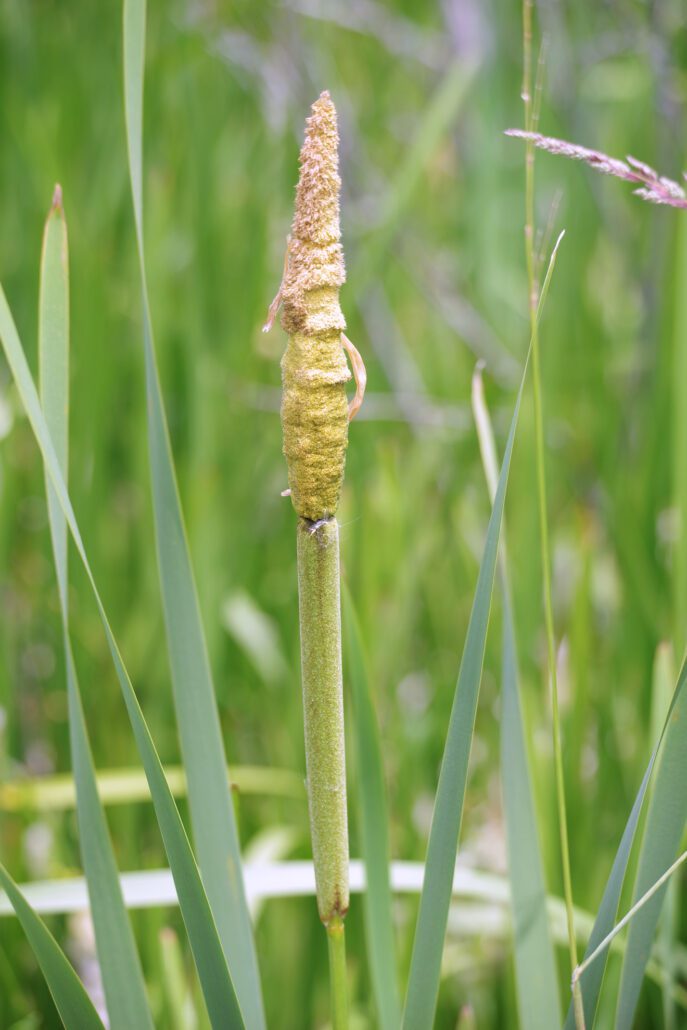
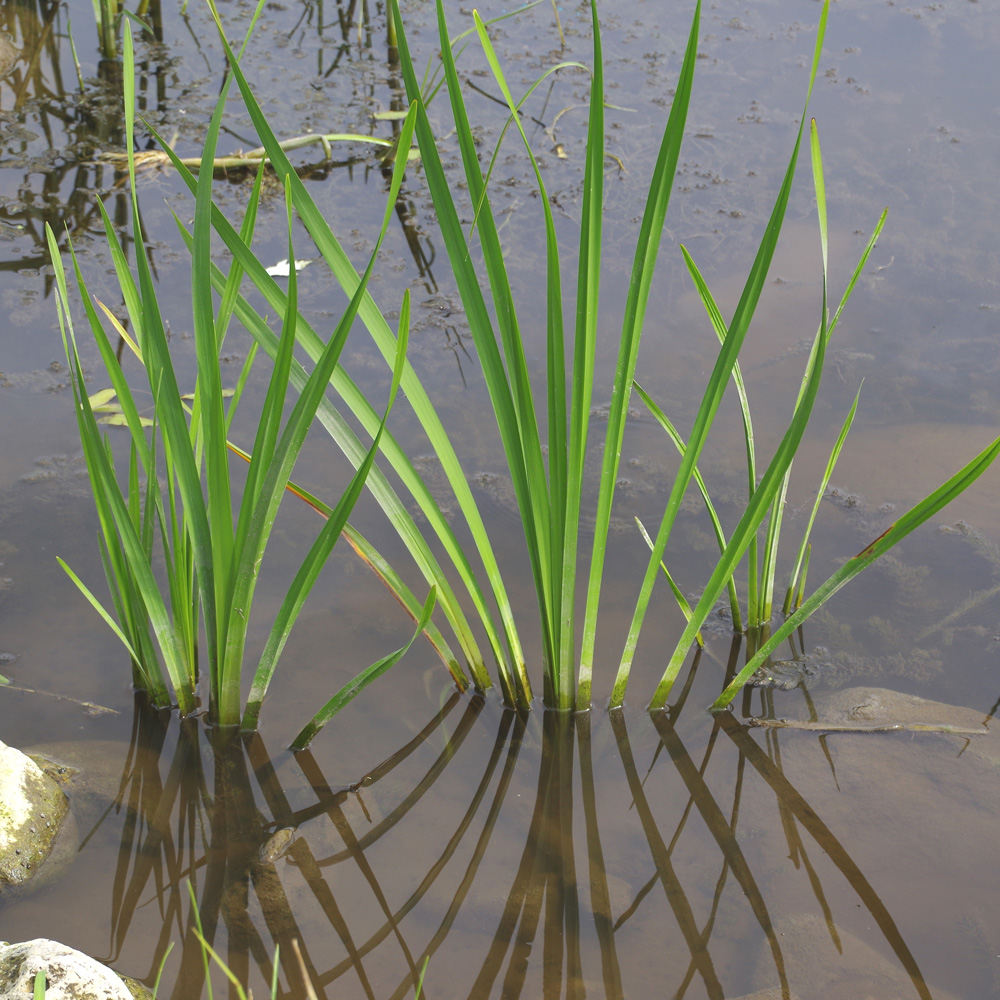
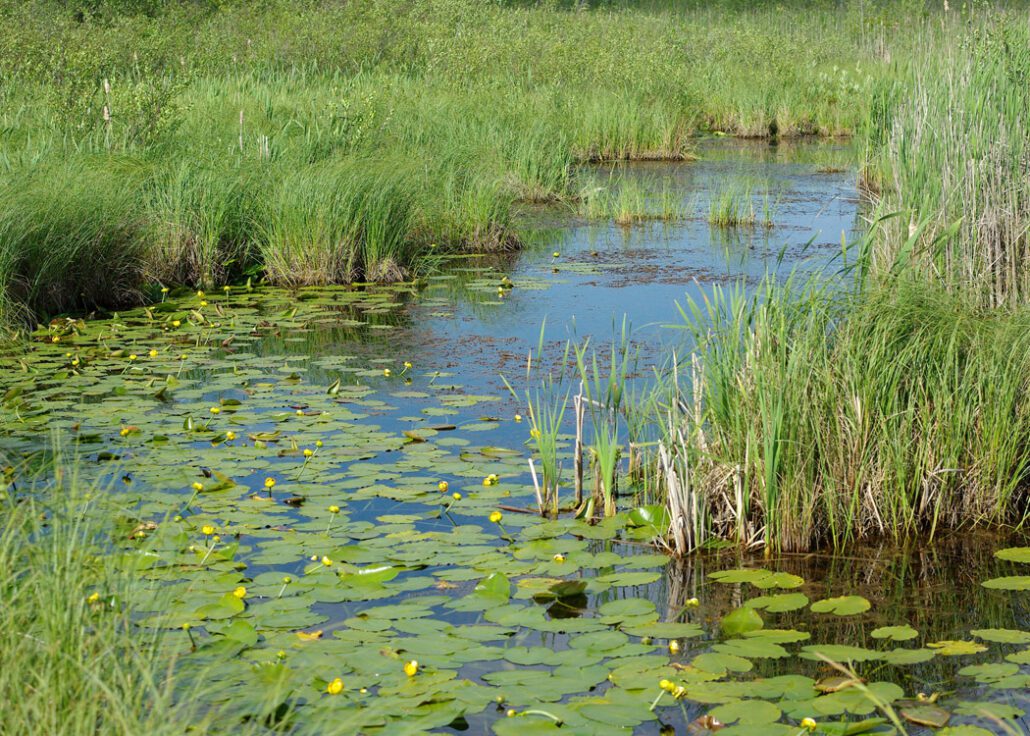
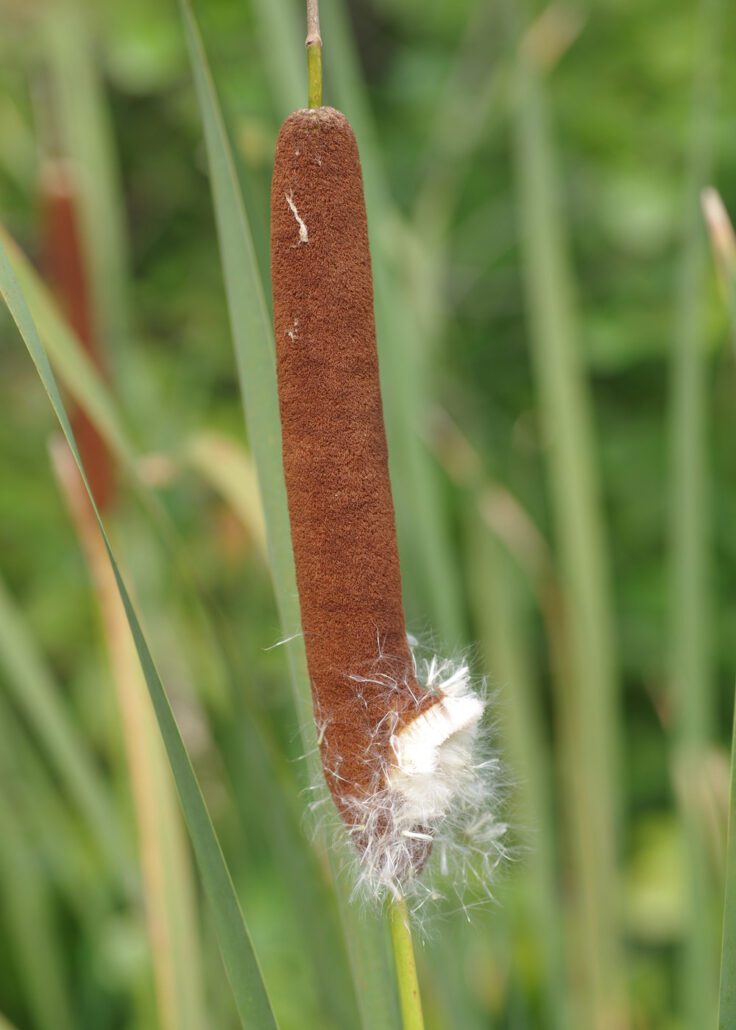
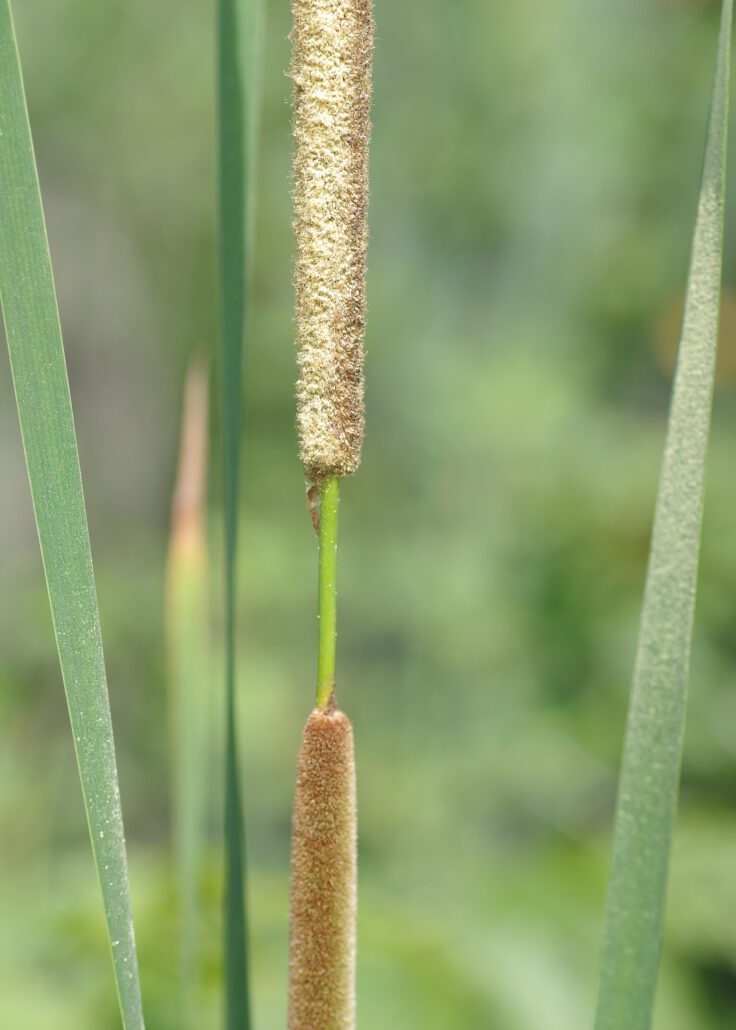
But the infrastructure of a cattail marsh is as impressive as what appears above the waterline. That mass of leaves is anchored by a dense, interlocking mat of rhizomes (a rhizome is an underground/underwater stem that puts out both shoots and roots). Each fruiting plant may produce as many as 200,000 seeds called “nutlets” – this windborne fruit launches colonies, and seeds can sit in the seedbank for decades waiting for the right conditions to germinate. Though a new plant doesn’t flower until its second summer, it develops, during its first year of life, a rhizome system that may span 10 feet in diameter and produce 100 shoots. This botanical exuberance allows colonies to advance, like an amoeba, as much as 15 feet annually.
Once a colony gets started, it spreads primarily by vegetative means, through the growth of the rhizomes. Plants that sprout from the same rhizome are called clones; a dense cattail stand is an impossibly intricate interweaving of clones from many rhizomes, so crowded that there is no opportunity for its own seed to germinate. Unless openings occur between the closely-packed cattails, there are few other large plants in the community.
But, what a cattail marsh may lack in plant diversity, it more than makes up for in animals. Oxygen is added to the water during photosynthesis, and the forest of submerged stems is habitat for myriad aquatic critters. Carp root at the rhizomes, breaking them up and aiding vegetative spread. Other fish, including sunfish, spawn and shelter there.
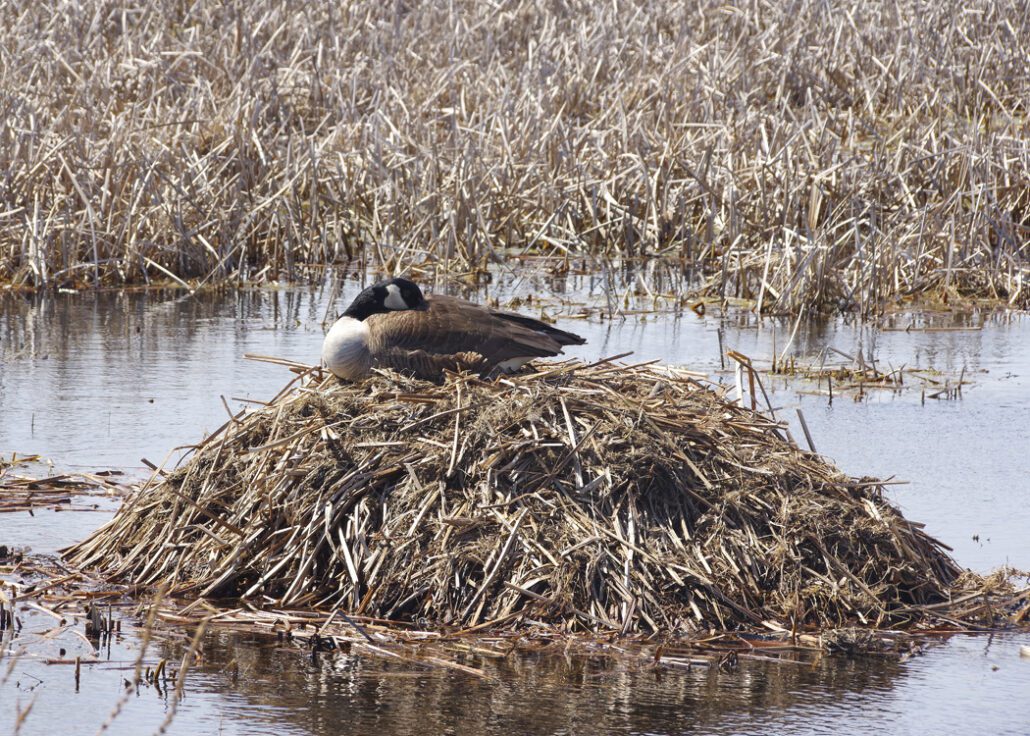
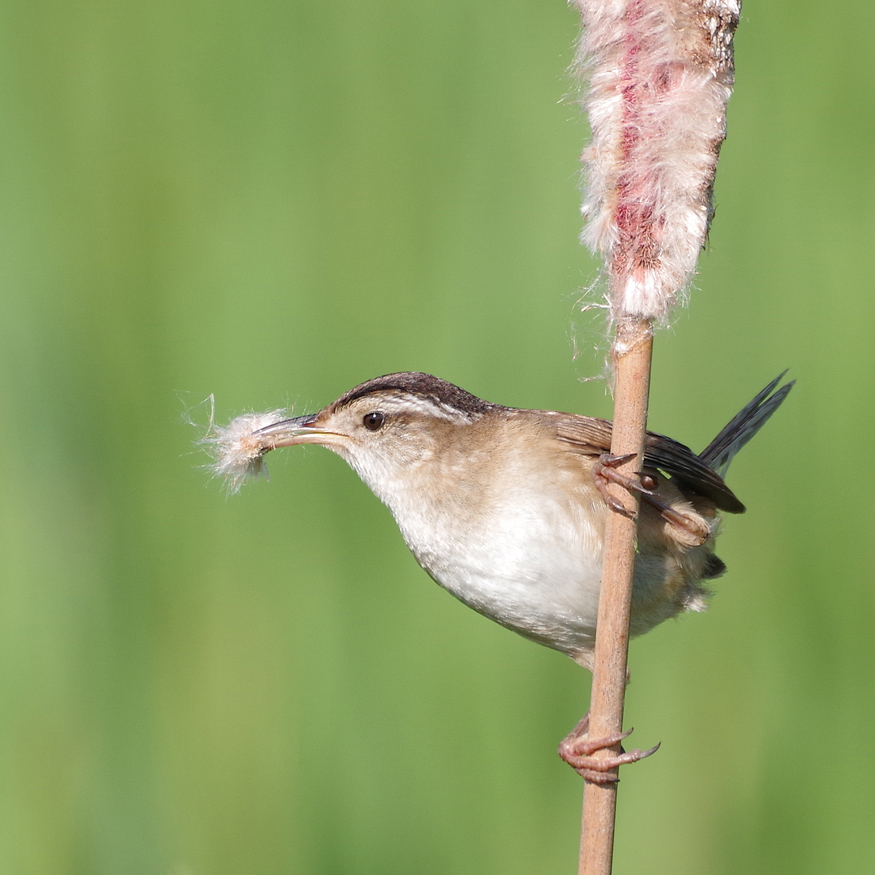
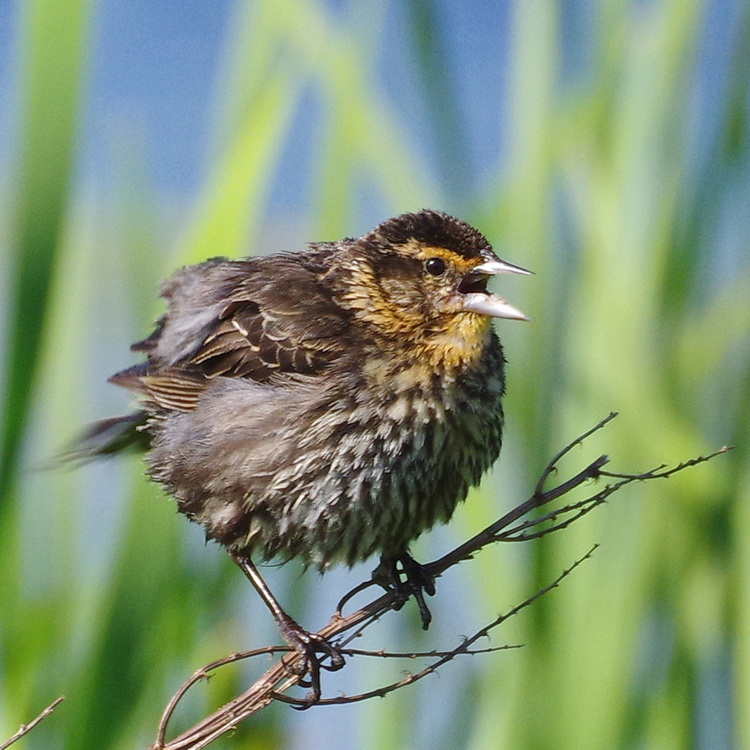
Muskrat lifestyles are bound to cattails; the shoots and rhizomes are eaten, and the leaves and stalks are made into lodges. These lodges, in turn, provide nest platforms for ducks and geese; and, by harvesting cattails, muskrats create open water for waterfowl. Many marshland birds like rails, coots, bitterns, grebes, Marsh Wrens, and waterfowl find food, nesting material, nest sites, and cover in the cattail thickets. Large flocks of blackbirds roost there and enrich the community with their droppings, and cattails are also used by frogs, beavers, painted turtles, and even moose.
Insects? Cattails attract a variety of moths, aphids, and caterpillars that feed on its rhizomes, leaves, sap, stem, and flower/seed spike, and their predators are attracted as well. The female sac spider bends a leaf around herself to form a pyramid-shaped box. Inside, she lays eggs and guards them there until she dies; her carcass provides her young with their first meal. In winter, the cigar-like seed heads host the pupating caterpillars (birds pecking at seed heads are looking for this protein); the stalk is home to a variety of beetles, and the rhizomes conceal the larvae of cattail mosquitoes.
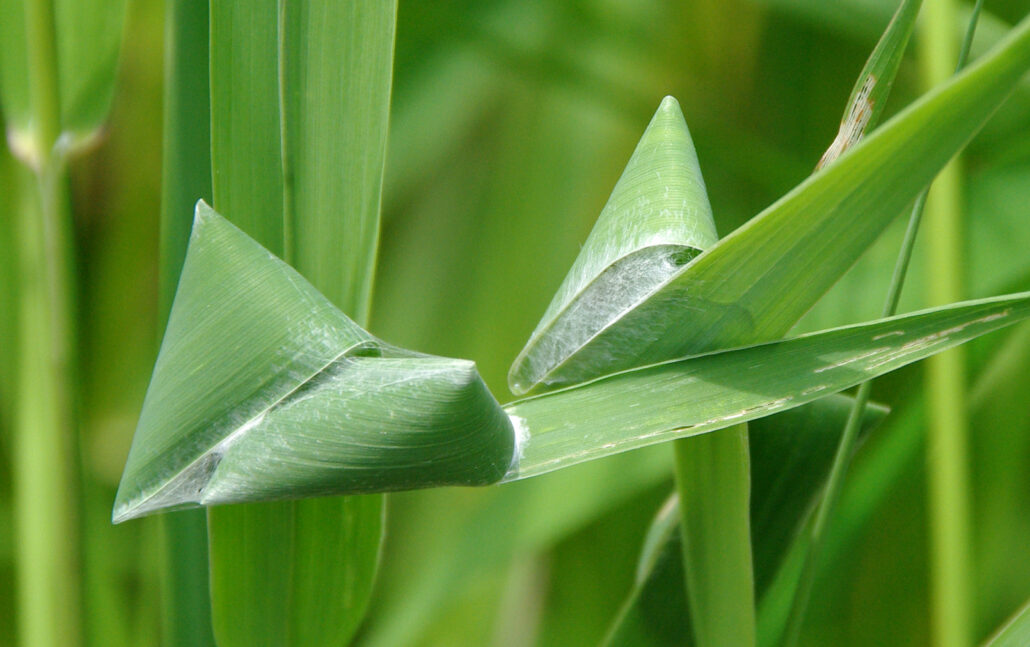
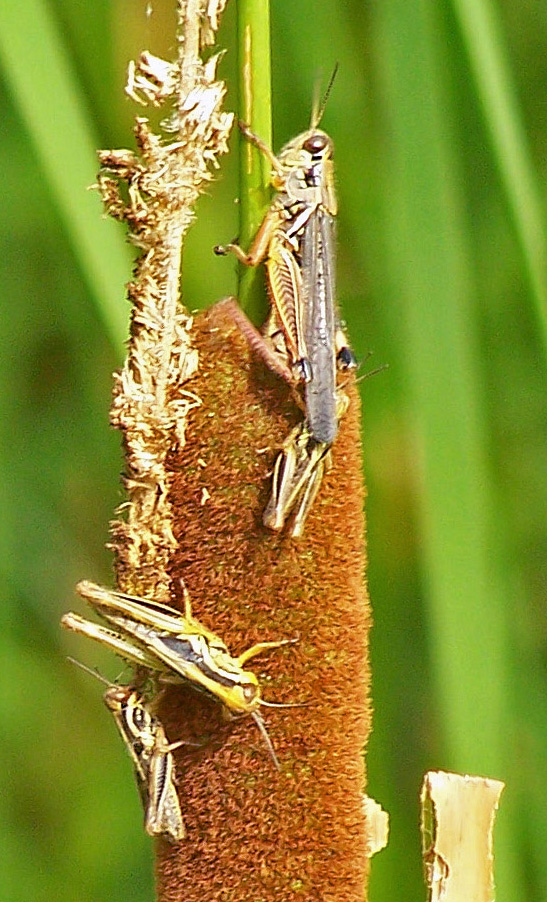
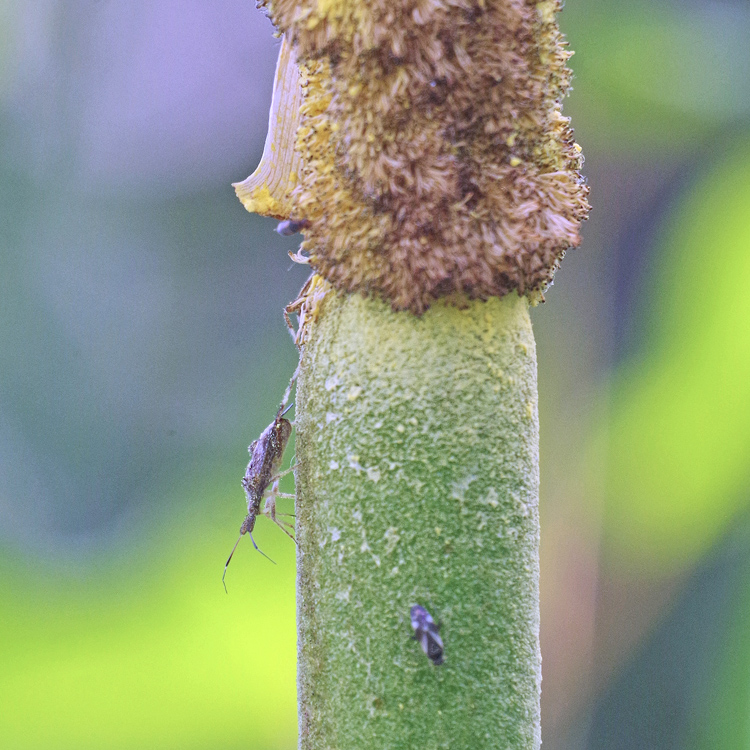
Common or Broad-leaved (Typha latifolia) grows on the damp soil and shallow standing water by a pond’s edge. It is less tolerant of pollution but is found in a wider range of soil acidity. Its base is fan-shaped, and the male and female flowers touch. Narrow-leaved cattail (T. angustifolia), which may have come from Europe in the 1800’s) can grow in deeper, more polluted water, and prefers more alkaline locations. Its base is cylindrical, its leaves narrower, and there is bare stem between the male and female flowers. The two species grow side-by-side, and they hybridize, and both the Narrow-leaved and the hybrid can out-compete the Broad-leaved cattail.
If cattails are community builders, cattail marshes are communities in transition. They generally grow with land on one side and open water on the other, and their decomposing vegetation makes soil (the take-home – every lake is a dying lake), readying the marsh for eventual colonization by plants with dryer preferences. As the land encroaches, cattails move farther out into the wetland. Wetlands are among the most productive ecosystems in the world, rivaling tropical rainforests in their production of biomass (biomass is the measurement of the weight or volume of biological material produced in an area). For more information about wetland issues, visit the website of the Wisconsin Wetlands Association at www.wisconsinwetlands.org.
Are cattails good for anything? The BugLady once read that wars were fought over wetlands, and cattails are certainly worth fighting for! Some part of the plant is edible 12 months of the year, from the starchy rhizome (cooked like potatoes or pounded into flour) to the pollen (a flour substitute) – one report says that an acre of cattails could produce almost 6500 pounds of cattail flour. Both the rhizomes and flower heads were used medicinally.
American Indians wove the leaves into mats, baskets, and walls, used the fluff for diapers (the settlers stuffed quilts with it and caned chairs with the leaves). A jelly that was made by pounding the rhizome was used to seal leaky boats. Today, research suggests that the food value of cattails approaches that of corn and rice. Quikrete users please note – a mixture of cattail seeds, ash, and lime sets up harder than marble.
So, if the wildlife likes it, what’s the problem? As one researcher said, narrow-leaved cattail can be beneficial to a wetland community “in limited quantities.” Broad-leaved cattails form dense stands, but there are breaks in the stands where other vegetation can grow and open water can be found. Narrow-leaved cattail crowds out native vegetation by forming impenetrable monocultures, and monocultures reduce food sources and don’t support a very diverse array of wildlife.
On the up-side, cattails keep pond edges from eroding (while it’s eating the pond).
The BugLady once worked at a Nature Center where thinning the cattails in a small pond by the Education building was an annual task. Here’s what she learned: when you pull on cattails, they pull back.
Kate Redmond, The BugLady
Bug of the Week archives:
http://uwm.edu/field-station/category/bug-of-the-week/

